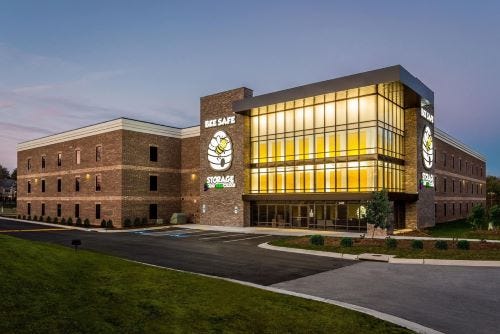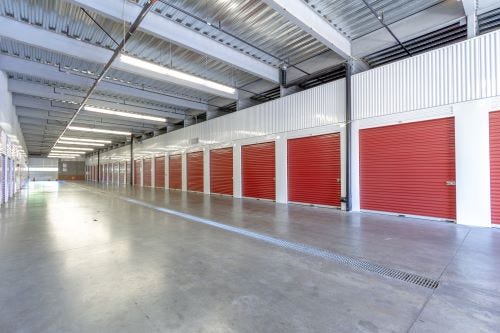Top Tier: Must-Have Elements for a Class-A Self-Storage Development
For the purposes of comparison, self-storage facilities are often categorized based on certain qualities and features, with designations of class A, B or C. Class-A properties are generally those that are newer with more modern amenities. If you’re planning to develop a project and want to achieve that top tier, here are some elements to include.

Though there aren’t official quality classifications for self-storage facilities, you may have heard assets being referred to as class A, B or C, based on generally accepted characteristics. If you’re in the market to develop a project, you may be aspiring toward the top tier to maximize your competitive edge. But what exactly does that comprise?
In general, class-A self-storage facilities are newer, with modern designs, premium amenities and very strong curb appeal. They’re also associated with five-star customer service and sophisticated security systems. These properties are often found in prime locations and along major thoroughfares.
In contrast, class-B (mid-tier) facilities are typically a little older but still well-maintained. They usually have some amenities, such as gated access and security cameras. Class-C sites are the oldest and most rundown. They’re often missing high-demand features such as paved drive aisles, adequate lighting and automated gates.
Building a class-A self-storage facility will cost more per square foot. However, in the right market, these assets also command higher rental rates to offset the construction outlay. Following are more details about what it means to develop a top-tier property in this industry.
Building Components
The overall aesthetics of a self-storage facility are the first indicators of class-A status. For a site to be considered top-tier, it must have excellent curb appeal.

Kuna Caves Storage in Kuna, Idaho
Work with your architect to showcase elements that can help your property stand out. For example, class-A facilities typically use a combination of building materials on the façade. Options include metal panels, insulated metal panels, masonry/concrete masonry unit, split-faced stone veneer, stucco and even wood. To create depth, your design might also include a pop-out, which is a section of building that juts out six to eight inches from the main.
Windows with faux roll-up doors are a common design element that allows passersby to see what appears to be a self-storage hallway. These are sometimes actual, functioning units, though it’s rare, as they aren’t private. It’s critical that there be good lighting in this area, so you can showcase it at night.

Bee Safe Storage in Greensboro, North Carolina
Finally, make sure there’s attractive, readable signage on the building as well as near the entrance. Depending on your location, you may need signs on more than one side of the facility. Make sure signs are well-lit at night.
Facility Design
There are multiple aspects to self-storage construction that can elevate an asset into class-A territory, and they must be addressed during the planning phase. Though it isn’t essential to incorporate everything, a combination will differentiate your facility from competitors.
For starters, think about designated loading/unloading areas for tenants. In most locations, it’s best that these be covered to keep customers and their goods protected from harsh elements. It can be as simple as a canopy that extends from the building. A more complex design might involve a large alcove cut into the building footprint. The most sophisticated and costly approach is a full drive-through.

The drive-through at Northwest Self-Storage in Portland, Oregon
Make sure you leave adequate space between buildings for driveways. The average width of a road lane is 12 feet, so for your drive-up self-storage units, the drives should be at least 24 feet wide. If you’re aiming to accommodate boats or RVs, you’ll need to go considerably wider, depending on the angle of the spaces. It’s important to note that class-A facilities don’t have gravel aisles! Pavement is non-negotiable.
Landscaping is also important. A well-designed and -maintained exterior bolsters curb appeal. Choose flora and coverings that mesh well with the local area. For example, landscaping at a facility in Arizona will look very different from one in Florida. The important thing is that it look nice year-round.
Site Security
Your self-storage tenants want to feel safe while visiting the property and confident that their belongings are secure. During planning, bring in an expert to help you design the best possible security system.
One way to convey security is to construct your buildings around the perimeter of the lot in what is known as a fortress-style layout. You can also add perimeter fencing and gated access.
High-definition cameras should be mounted throughout the property to have visual coverage of the interior and exterior. Post signage that lets visitors know the facility is under video surveillance 24/7.
Finally, every door and elevator should have access control. Customers should only be able to enter the particular area or floor where their unit is located. This can be controlled with keypads, mobile apps, keycards and even biometric identification.
Customer Experience
Great amenities and top-notch customer service are essential to be considered a class-A operation. Here are a few ways to convince tenants that yours is the best facility in their area:
Moving equipment. Carts and dollies to help people to move their items to and from their unit is a low-cost amenity that makes a huge difference in providing an outstanding customer experience. Just remember: They need to be properly maintained and replaced when needed.
Moving trucks. Offering trucks for rent or allowing customers to use a vehicle for free upon move-in is a great way to add an extra profit center and attract more renters.
Retail merchandise. Offering packing and moving supplies is a convenience for customers, saving them from having to make an extra stop during a stressful time in their lives.
Online rentals and account management. Being able to rent units online is a must for a class-A self-storage facility. Today’s customers also expect to make payments and manage their account online.
This is just a place to start. There are many design elements and operational aspects to consider when developing a class-A project. The number of decisions that need to be made can make the process feel overwhelming, which is why it’s crucial to rely on the expertise of your development team. Dig in, ask questions and mimic what other top-tier self-storage operators are doing.
Melissa Anderson is an account manager for Forge Building Co., which specializes in pre-engineered metal buildings for industrial and commercial applications. She has more than 20 years of experience in the construction industry. With an astute understanding of self-storage, she helps seasoned investors as well as those who are just beginning their journey with the construction of their first project. For more information, call 208.470.5368 or email [email protected].
About the Author(s)
You May Also Like







